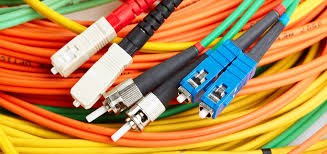Optical fiber cable is a modern, high-speed communication medium. Its strands are made from optically pure glass and are thinner than human hair. Optical fiber cables are made up of long strands of glass or plastic fibers. These strands are bundled together to form a cable that can transmit data over long distances without any loss in quality.
Optical fiber cable installation is allowed in certain types of enclosures. For example, nonconductive optical fiber cables can be installed in control centers, industrial establishments, and factory-assembled systems. However, certain conditions must be met to ensure proper installation and maintenance. For example, the installation of a composite cable must be separated from a conductive cable by at least 15 m (50 ft). A rigid metal conduit must be used to enclose the optical fiber cable.
Types of Optical Fiber Cable
There are two types of optical cables: multimode and single mode. Multimode cables are used in short distances. They are typically used for Ethernet networks, telephone networks, and other low-speed data transfers. Multimode cables are used in a variety of situations, but they are not as efficient as singlemode cables. Singlemode cables are used in long distances. They provide higher bandwidths and can be used for data transfer over fiber optic lines. Singlemode fibre is typically used for longer-range LANs, cable TV, and telephony applications.
Multimode cables use a laser to transmit data and can only transmit in one direction at a time. Singlemode cables use light waves that travel in the same direction and can transmit data in both directions at the same time. Multimode cables are typically cheaper than singlemode cables because they use less expensive materials and have lower performance requirements.
Composition
Optical fiber cable is made up of several different parts. The cladding is the outer layer and the core is the inner part. Both parts are designed to allow light to pass through the cables. The cladding also protects the core from moisture and damage. The cladding and core are made from glass or plastic.
The cladding is made from a lower density material than the core. This allows light to enter the fiber at an angle greater than the critical angle. The maximum angle from the axis of the fiber is called the numerical aperture of the cable. A higher numerical aperture fiber requires less precision to work with.
Reliability
One of the key issues in the design and manufacture of optical fiber cables is reliability. To improve reliability, it is important to follow the specifications provided in the engineering documentation. In particular, the fiber, connector, and cable should be inspected according to established criteria. This way, the cable can be built with a high degree of confidence.
There are many factors that influence the reliability of optical fiber cable. These factors include flaws and stress. A properly designed structure can minimize damage caused by moisture and stress. Moreover, fiber cables have a design life of about 20 to 25 years.
Read Also : What Are the Different Types of Utility Metering Systems?
Costs
There are several factors that influence the costs of optical fiber cable installation. One factor is the location of the new line. If the line needs to go underground, the cost can increase considerably. Additionally, the costs may increase if there are physical obstacles. Some examples of physical obstacles include a server room or a telco closet.
Depending on the building size, fiber installation can cost anywhere from $1 to $5 per foot. The cost is also dependent on the type of conduit and number of drops needed to connect the buildings. However, fiber installation is much cheaper than copper wires. This is because fiber is less prone to corrosion than copper wires.


















